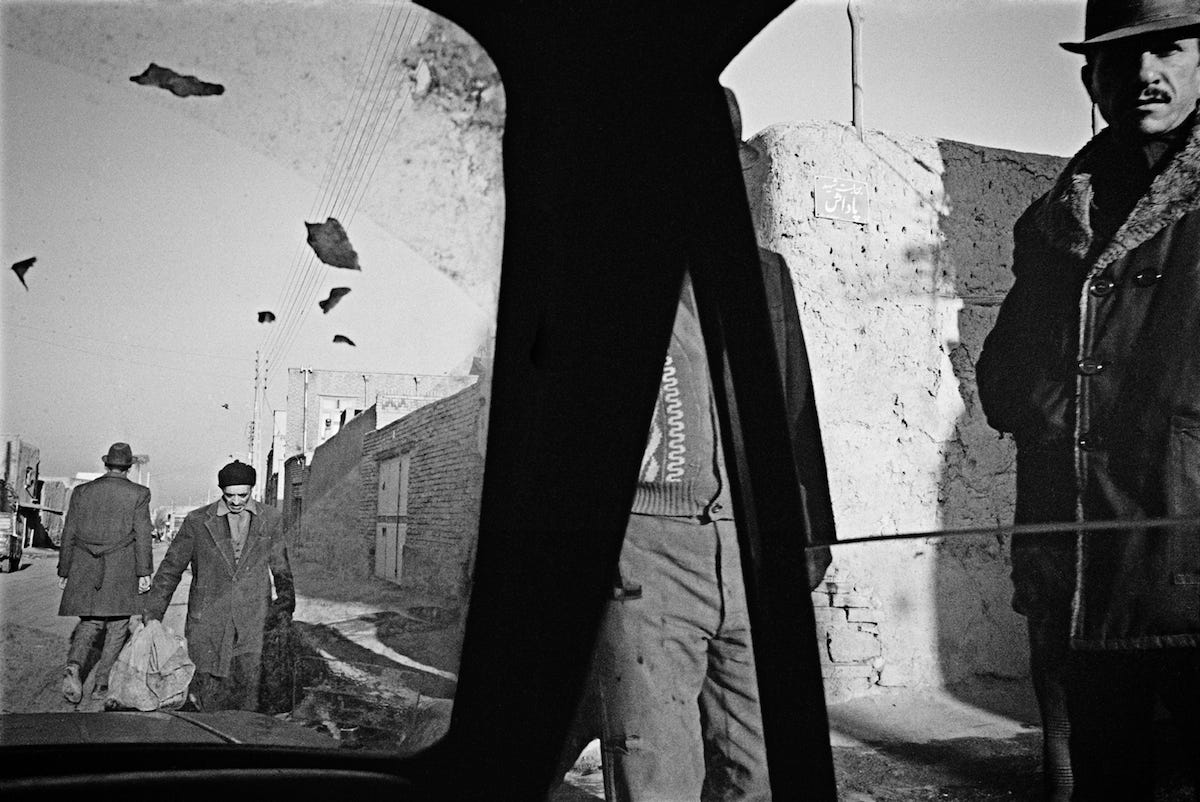As a serious thinker and writer of this newsletter1, I’ve pondered several big photography questions. I’ve tried to understand why I like photography, I’ve challenged the narrative capabilities of photography, and talked about the importance of ideas. When writing about those things, I often look for answers in the work of other artists.
You’re into photography and you don’t know Gilles Peress? is part of a series dedicated to exploring the work of renowned photographers. I was once told “you’re into photography and you don’t know William Eggleston?” by a gentleman who was surprised that I can be interested in photography without knowing Eggleston. I tell that story here in case you missed it.
Unlike the first two photographers I wrote about in this series (Eggleston and Herzog), Gilles Peress’s work is not centered around everyday life. Peress photographed a lot of conflict and political events. It’s not the usual style of work I am interested in. His photography is exceptional and captivating, but what caught my attention even more is the way he speaks about his work. His ideas about the world, and photography’s place in it.
Photography for survival
Peress speaks about his work with a lot of clarity and meaning. There’s some irony here because he initially became interested in photography when he saw a huge gap between language and reality. As a student of political science and philosophy in Paris during the 1960s, Peress found language unable to accurately describe the reality around him. He picked up a camera and began to use photography, not just as a hobby and career path, but as a tool to make sense of the world.
“It was simply a question of survival, which is that I needed a tool and a vehicle to understand and formalize what was out there in the world, my relationship to reality”
Despite his lack of trust in language, I find his explanations clear and relatable. Peress went on to photograph several conflicts and political events in Northern Ireland, Iran, Bosnia, Rwanda… He views his work as a way for him to understand the world around him. Whether it’s Iran or Rwanda, he travels to the heart of the story and uses photography as a tool for learning about the world.
Rejection of categories
Because of his work in conflict zones, Peress is often described as a photojournalist or war photographer, although he rejects those categorization.
“I always try to escape categories because with those categories are attached predictable forms. They really have very much to do with a market or a way to market the pictures and I’m interested in what’s unpredictable. I’m interested in what happens in the no man’s land between known categories”
The no man’s land is the intersection between art and photojournalism, or photography and literature. Peress’ work indeed blurs those lines. He is documenting devastating world events and presenting his photographs in books that read like art rather than news. There’s a certain clash between horror and aesthetic.
Photography as a narrative tool
His latest book, Whatever You Say, Say Nothing, challenges the norms of a typical photography book. Not only in that it has over 1000 photos but in that it is designed to tell a story that blurs the line between fiction and documentary. He calls it a documentary fiction. The book organizes a decade of photographs into 22 fictional days that tell the story of the Irish civil rights struggle. The 22 days are meant to represent the non linear nature of time during conflict: the days are different but the same patterns are repeated.
I previously wrote that I didn’t think of photographs as a narrative medium. Indeed I still don’t think an individual photo tells a story. A story may be implied or imagined in the viewers mind. But sequencing images in that way Peress does has much more narrative power. “A paper movie” is what he called it. Still, the story is not fully told by the book or Peress himself. He calls this the multiplicity of authors:
“In any book, there’s a multiplicity of authors. There’s me who shoots the pictures, but there’s also the camera […] and then there’s the people who are looking at it to do an interpretation”
There’s a lot to learn from the photography of Peress and how he speaks about his photography. If you want to learn more about him, check out this interview. Be warned, if you do decide to look more deeply into his work, you will see very graphic photographs.
As always, thanks for reading!
and master of sarcasm












Poweful images! Thanks for sharing.
Goodness, these images are incredible. Thanks for sharing.